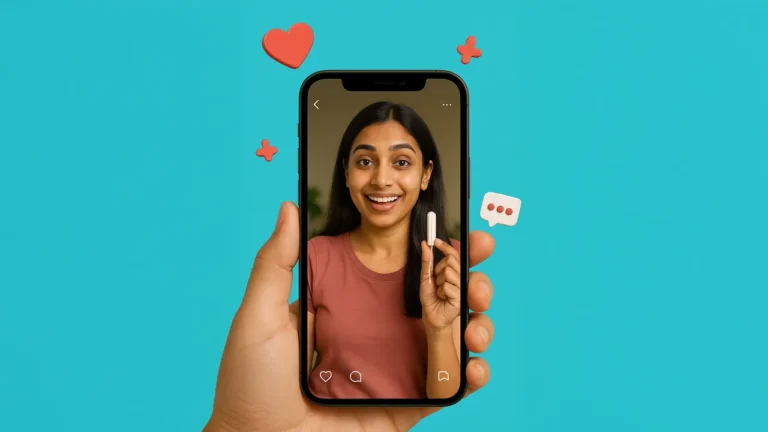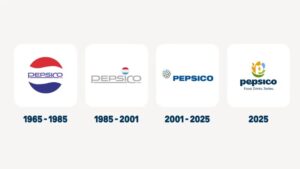From mental health and menstruation to therapy and sexual wellness, once-taboo topics are now taking center stage — and it’s influencers, not traditional media, leading the charge. As more brands join the conversation, the question is no longer should they speak up, but how.
Taboo Is the New Topical
There was a time when subjects like periods, sex, and mental health were strictly off-limits for brands. Mentioned only in hushed tones — if at all — they were wrapped in stigma and hidden behind euphemisms. But that’s changing fast, especially online.
“We’re living in two Indias,” says Neha Dhara Sharma, Senior Creative Director at DViO Digital. “One’s still whispering about pads in black plastic bags, and the other’s doing Instagram Lives on period cramps with brand collabs. What used to be taboo is now Tuesday.”
The shift isn’t yet fully reflected in mainstream advertising like TV or billboards — but digital platforms are a different story. Here, real, raw conversations are thriving — and influencers are the catalysts.
Why the Change? The Rise of Value-Driven Conversations
Krishna Desai, Chief Product Officer at Animeta, says the shift is rooted in a cultural transformation: “Brands are embracing sensitive topics because consumers now expect more than a product — they want purpose, empathy, and authenticity.”
What’s changed isn’t just the topics — it’s who’s talking about them.
Enter influencers.
“Influencers make difficult conversations feel personal and relatable,” says Prashant Nair, Business Development Manager at Dot Media. “When brands partner with creators who genuinely care about the issue, the message hits harder — and feels real.”
And this relatability is key.
“Would you buy a sex toy because a movie star mentioned it at an awards show? Probably not,” says Himanshu Arora, Founder & CEO of Creators Network & BookYourCreator. “But if a creator you follow shares their experience with anxiety, therapy, or sexual wellness, you listen. You trust them. You might even take action.”
Influencers as Trust Builders
Creators bring vulnerability, context, and a sense of lived experience that traditional ads rarely achieve — and that builds trust. One standout example is Kusha Kapila’s lingerie brand, Underneat. Even before launching, the brand gained massive traction online — not through flashy ads, but through unfiltered, honest conversations with followers about everyday struggles like choosing the right lingerie for different outfits.
For creators like Pema Leilani, whose content explores emotional wellness and body image, authenticity is non-negotiable. “When brands allow creative freedom, the content becomes fresher, more impactful,” she says. “But rigid guidelines kill the connection.”
In today’s landscape, values often matter more than benefits. And consumers aren’t just buying products — they’re buying into what a brand stands for.
According to a 2023 Dentsu India report, 70% of Indian consumers say influencer marketing affects their purchase decisions, and 56% trust influencer recommendations on Instagram. That’s not advertising — that’s influence.
When Did the Shift Begin?
While TV and radio still tread lightly, digital became the space for bold, meaningful conversations.
Arora notes, “Digital changed the game. TV still sidesteps controversy, but online, people are talking openly about things that really matter.”
Krishna Desai adds that the turning point came between 2018 and 2020 — spurred by global social movements, growing digital access, and the COVID-19 pandemic, which pushed raw, personal stories to the forefront.
Movements like #MeToo, rising LGBTQIA+ advocacy, and open conversations around mental health found their home on platforms like Instagram and YouTube — and that changed the rules.
“After lockdowns, consumers started choosing brands that align with their values,” says Nair. “That shift wasn’t just digital. It was deeply emotional.”
Campaigns That Mattered
- Durex’s #OrgasmInequality campaign (2019) tackled a stark truth: 70% of Indian women don’t orgasm every time they have sex. By collaborating with creators who shared their own stories — including when they faked it — Durex turned a taboo into a talking point.
- The Durex Podcast, hosted by Abhay Deol, features voices like Prajakta Koli and Rani Ko-HE-nur speaking openly about sexual wellness.
- Leezus by Leesa Mangaldas is helping normalize products like massagers with content that’s more educational than provocative.
- Bhuvan Bam’s investment in Peppy, a sexual wellness brand, has helped broaden its reach, powered by his personal credibility.
In the mental health space, creators like awkwardgoat3 (Divija Bhasin) have helped normalize therapy and emotional vulnerability. Platforms like Yuvaa partner with brands to highlight youth issues like identity, gender equity, and mental health — using creators who speak from lived experience.
Three years ago, even saying “vibrator” online felt radical. Today, brands like MyMuse, Bleu, and Peppy4U are not only using the word — they’re educating audiences through creator-led content.
“What used to be awkward dinner table talk is now breakfast scroll material,” says Sharma. “That’s real progress.”
Credibility Over Clicks
Today’s Gen Z consumers expect more than token gestures. A McKinsey survey found that over 70% of Indian Gen Zers believe brands must “stand for something.” But standing up isn’t enough — credibility is king.
“The line between brave and performative is thin,” says Desai. “Audiences can sense insincerity. One-off campaigns won’t cut it anymore — it’s about consistency and thoughtful partnerships.”
Desai adds, “Future brand bravery will be measured not by the boldness of a campaign, but by how consistently a brand shows up for the causes it claims to support.”
Nair agrees: “Audiences will forgive missteps if they see genuine effort. But if it feels forced or opportunistic, the backlash is swift.”
What’s Next?
As more brands enter the space of social impact and taboo topics, the pressure is on to do it right. Not louder. Not flashier. But more honestly.
Influencers will continue to be at the heart of this evolution.
“Working with the right creators turns a campaign into a conversation,” says Desai. “It’s not just messaging — it’s shared meaning.”
In Sharma’s words: “Creators aren’t a ‘nice-to-have’ anymore — they’re the compass. If brands want to explore complex terrain, they need people who actually know the way.”
Because when it comes to talking about what matters, consumers expect more than boldness — they expect brands to mean it.













